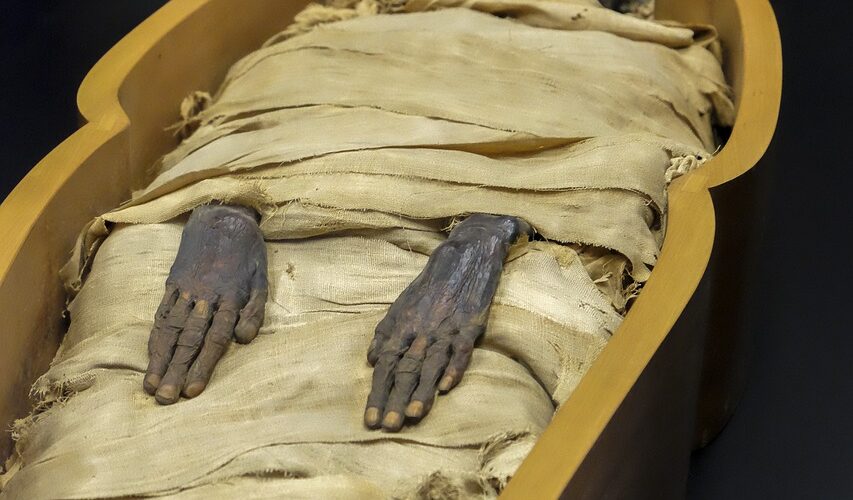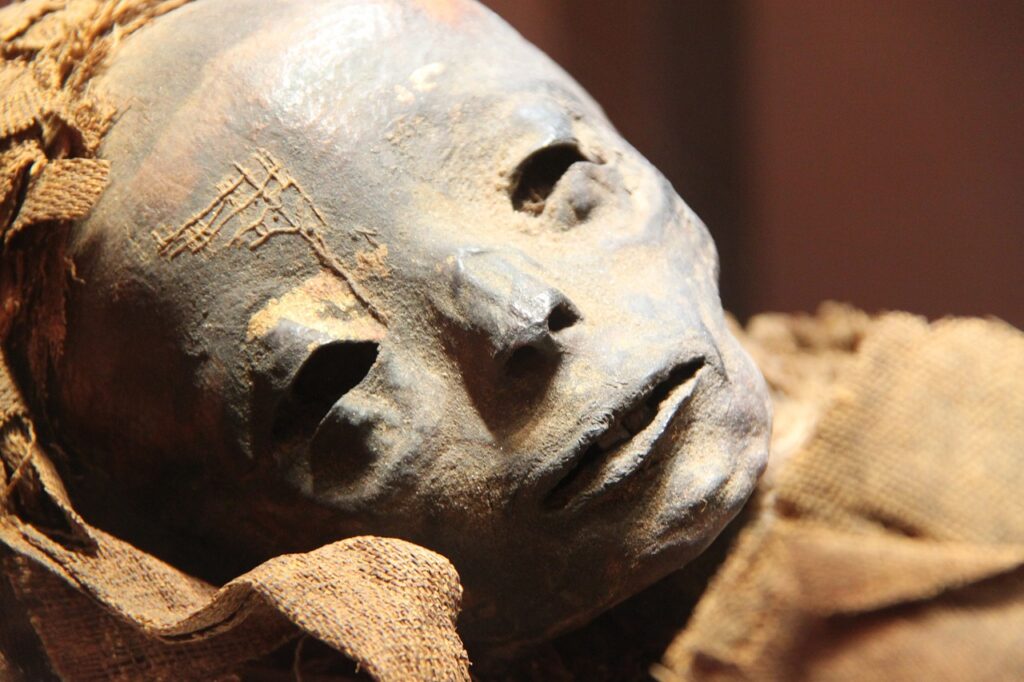Findings of 5 Great Mummy


In contemporary times, mummies stand as prized and revered relics from ancient history. However, it might come as a surprise that before the 19th century, this wasn’t the prevailing sentiment.
Hatshepsut
Hatshepsut, one of the most prominent female pharaohs, ruled over Egypt for around two decades, overseeing ambitious construction projects and establishing crucial trade routes until her death in 1458 B.C. Howard Carter, an archaeologist, discovered her royal tomb in Egypt’s Valley of the Kings in 1902. However, upon discovering her sarcophagus some years later, it was found to be devoid of any remains. Carter also unearthed a separate tomb, KV60, housing two coffins—one belonging to Hatshepsut’s wet nurse, identified by an inscription, and the other to an unidentified woman.
In 2006, Dr. Zahi Hawass led a team in an attempt to ascertain whether the anonymous woman in KV60 could be the missing queen. A crucial piece of evidence emerged: a molar tooth found in a wooden box inscribed with Hatshepsut’s name. Comparing the tooth to a gap in the mummy’s upper jaw, researchers found a perfect match. This discovery led them to conclude that the search for Hatshepsut had finally reached its conclusion.
King Tutankhamen
Becoming pharaoh at the tender age of nine, the “boy king” of Ancient Egypt, Tutankhamen, ruled for roughly 10 years (c. 1333-1324 B.C.). Initially obscure during his reign, Tutankhamen—famously known as “King Tut”—vaulted to global prominence in 1922 with the discovery of his astounding tomb by archaeologist Howard Carter in Egypt’s Valley of the Kings. Despite signs of previous intrusion, the tomb overflowed with a trove of ancient treasures: from jewelry to gilded shrines and a majestic solid gold funerary mask.
The uncovering of Tutankhamen’s tomb sparked widespread intrigue in Egyptology, captivating the world’s imagination. Tragically, Lord Carnarvon, Carter’s partner and financial backer, succumbed to an infected mosquito bite months after the tomb’s opening. His demise spawned the legend of the mummy’s curse, an ominous belief suggesting dire consequences for those who dared disturb King Tut’s resting place.
Ginger
Dubbed for its distinctive red hair, “Ginger” stands as the most renowned among six naturally mummified bodies discovered in the late 19th century from shallow graves in the Egyptian desert. It made its public debut at the British Museum in 1901, marking the first public exhibition of a mummy and has remained on display there ever since.
Ginger and the other bodies unearthed alongside it represent the oldest known mummies, dating back to approximately 3400 B.C. During their time, artificial mummification wasn’t a widespread practice. However, the bodies underwent natural desiccation and preservation due to the warm sand within which they were interred.
Ramesses II
Considered by numerous historians as Egypt’s most formidable pharaoh, Ramesses II held reign for six decades (c. 1279-1213 B.C.), surpassing the age of 90 and reputedly fathering over 100 offspring. Initially interred in the Valley of the Kings following pharaonic traditions, his remains were relocated by ancient Egyptian priests to safeguard against rampant plunderers.
In 1881, Ramesses II’s mummy was unearthed in a concealed royal cache at Deir el-Bahri, among more than 50 other rulers and nobles. By 1974, archaeologists noticed signs of deterioration and arranged for its transportation to Paris, where specialists treated a fungal infection. Prior to the journey, Ramesses II was issued an Egyptian passport, noting his occupation as “King (deceased).”
Valley of the Golden Mummies
Situated in Egypt’s Western Desert, the Bahariya Oasis held significant agricultural importance in ancient times and presently hosts numerous archaeological sites, notably a Greek temple venerating Alexander the Great. In 1996, an antiquities guard, riding a donkey across the temple’s grounds, encountered an unexpected revelation when the donkey stumbled into a hole, uncovering an opening in the desert floor leading to the edge of a tomb.
Under the leadership of Dr. Zahi Hawass, a team of archaeologists commenced excavations at this site, famously known as the Valley of the Golden Mummies. The initial expeditions unveiled several hundred mummies from Egypt’s Greco-Roman era, accompanied by a treasure trove of artifacts. The array of adornments found on the mummies implies that the site served as the final resting place for individuals spanning various societal strata, encompassing affluent merchants, middle-class members, and less affluent residents. Archaeologists speculate that up to 10,000 more mummies might lay buried beneath the sand.








